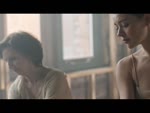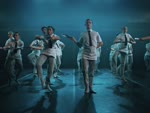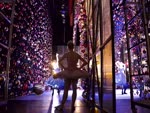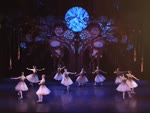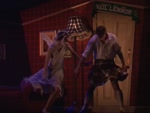100 Bq/Kg, 0.23 µSv/h: The standard of living in Fukushima
Full length video
Please read Understanding catalogue records for help interpreting this information and Using footage for more information about accessing this film.
Title: 100 Bq/Kg, 0.23 µSv/h: The standard of living in Fukushima
Reference number: 12498
Date: 2014
Director: d. Yushin Toda
Production company: japan desk scotland
Sound: sound
Original format: unknown
Colour: col
Fiction: non-fiction
Running time: 42.35 mins
Description: japan desk scotland’s second documentary about the Fukushima nuclear accident in 2011, showing a visit to the area of Soma near Fukushima and how residents live with the aftermath of radiation and the tsunami.
Credits:
p. Fumi Nakabachi and Yushin Toda, japan desk scotland
comm. w. Yushin Toda
ph. Fumi Nakabachi
ed. Hajime Kobayashi, (Colin Brierley)
m. Marius Pirhonen
Shotlist:
Filmmaker's synopsis:
This is japan desk scotland’s second Fukushima documentary, based on the interviews carried out in July 2013 primarily with those interviewed in the first one, as a sequel to ‘Our friends in Fukushima’.
‘100 Bq/Kg’ is the limit of radioactive materials in general foods in japan, and ‘0.23 µSv/h’ is considered the air dose rate target for decontamination. These are numbers often cited during the interviews.
Kencho Kawatsu, Fukushima University, takes japan desk scotland to the coastal area of Soma City, where former residents are said to be reluctant to come back to live. Although the area is outside the evacuation zone, they saw the tsunami coming and wiping houses away.
Unlike tsunami, radioactivity is invisible. Kenji Nanba continues a regular analysis of radio caesium in the water of Abukuma River, which is inspired by Chernobyl’s long-term observation of environmental radioactivity. Some of the fish caught in the river contain radio caesium above 100 Bq/Kg. Yoshitaka Takagai has almost developed a new tool to measure strontium-90, which remains in bones and might trigger bone cancer. Working with Fukushima University, Ichii, a local supermarket chain, checks radio caesium in their commodities and publishes the outcome, as a means to make invisible radio caesium visible to their customers.
The views of Fukushima University students and academics on radioactivity are also heard.
Interviewees:
Kencho Kawatsu, Yoshishige Kusano, Kenji Nanba, Yoshitaka Takagai, Makoto Matsueda, Daichi Ito, Akira Sato, Hirofumi Tsukada, Mamoru Sato, Fumiko Goto, Atsushi Iwasaki, Akiko Tomaru, Mayuko Noda, Yumiko Oyama, Yuki Naito, and Miyuki Sasaki.


